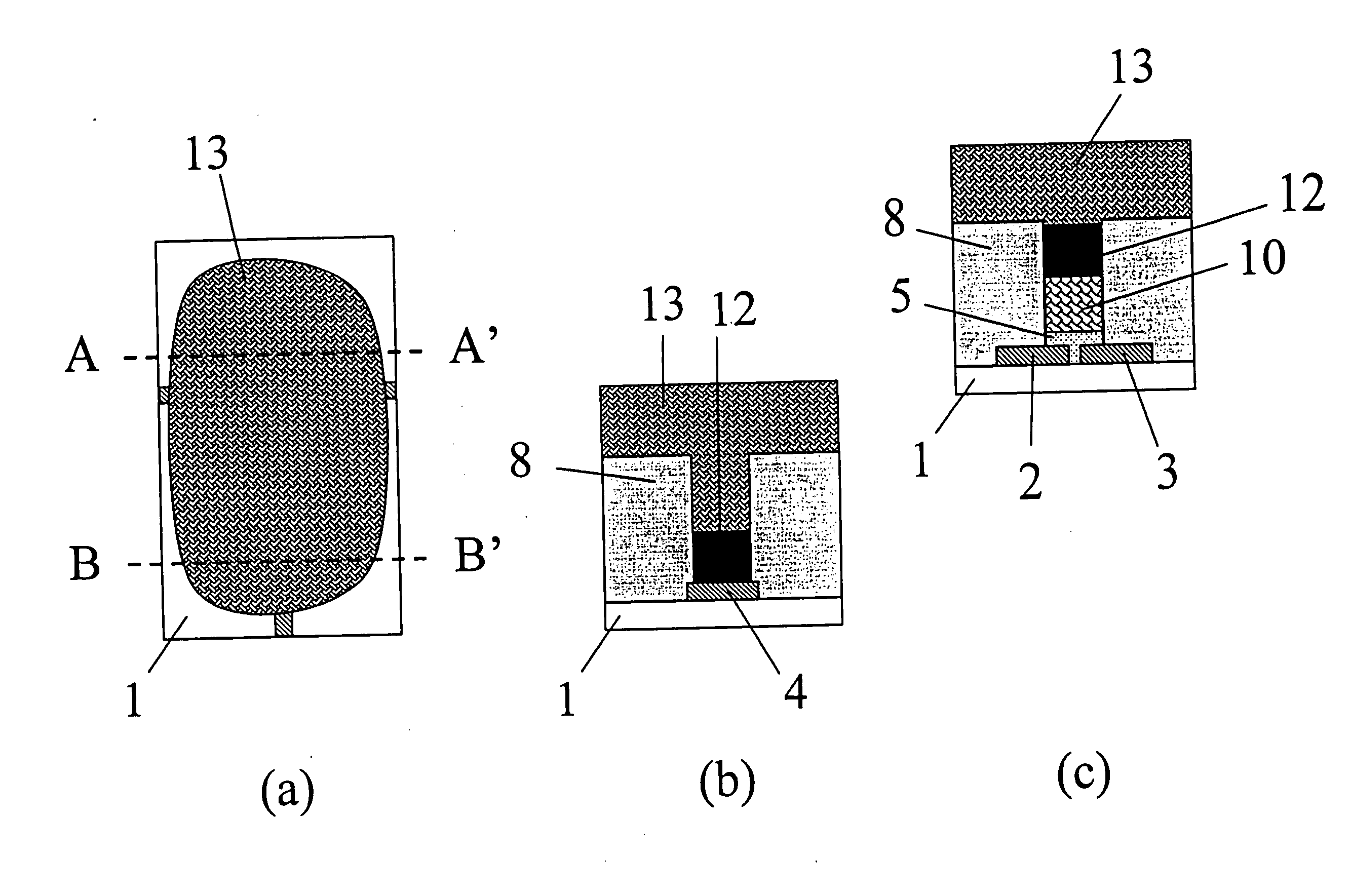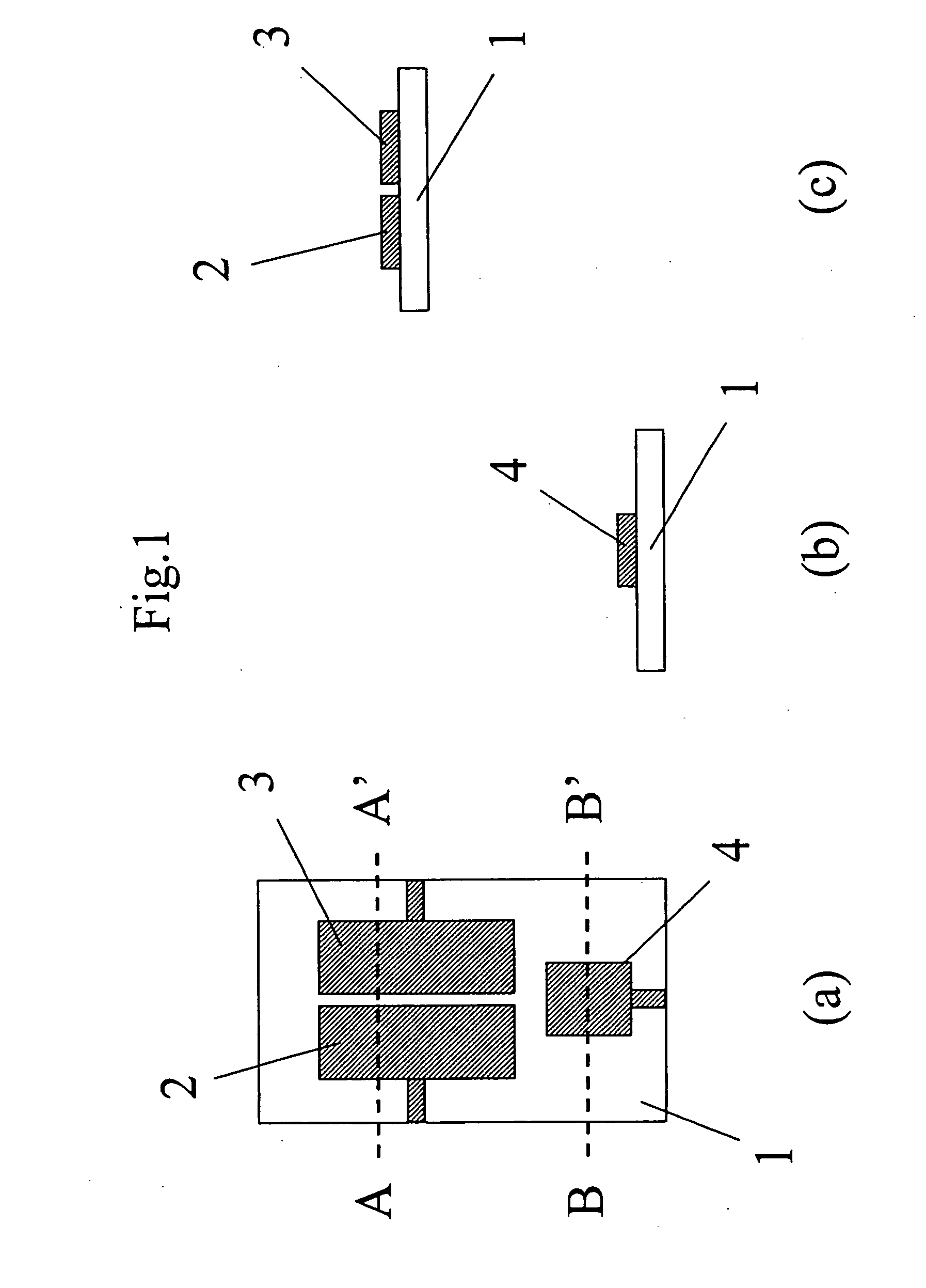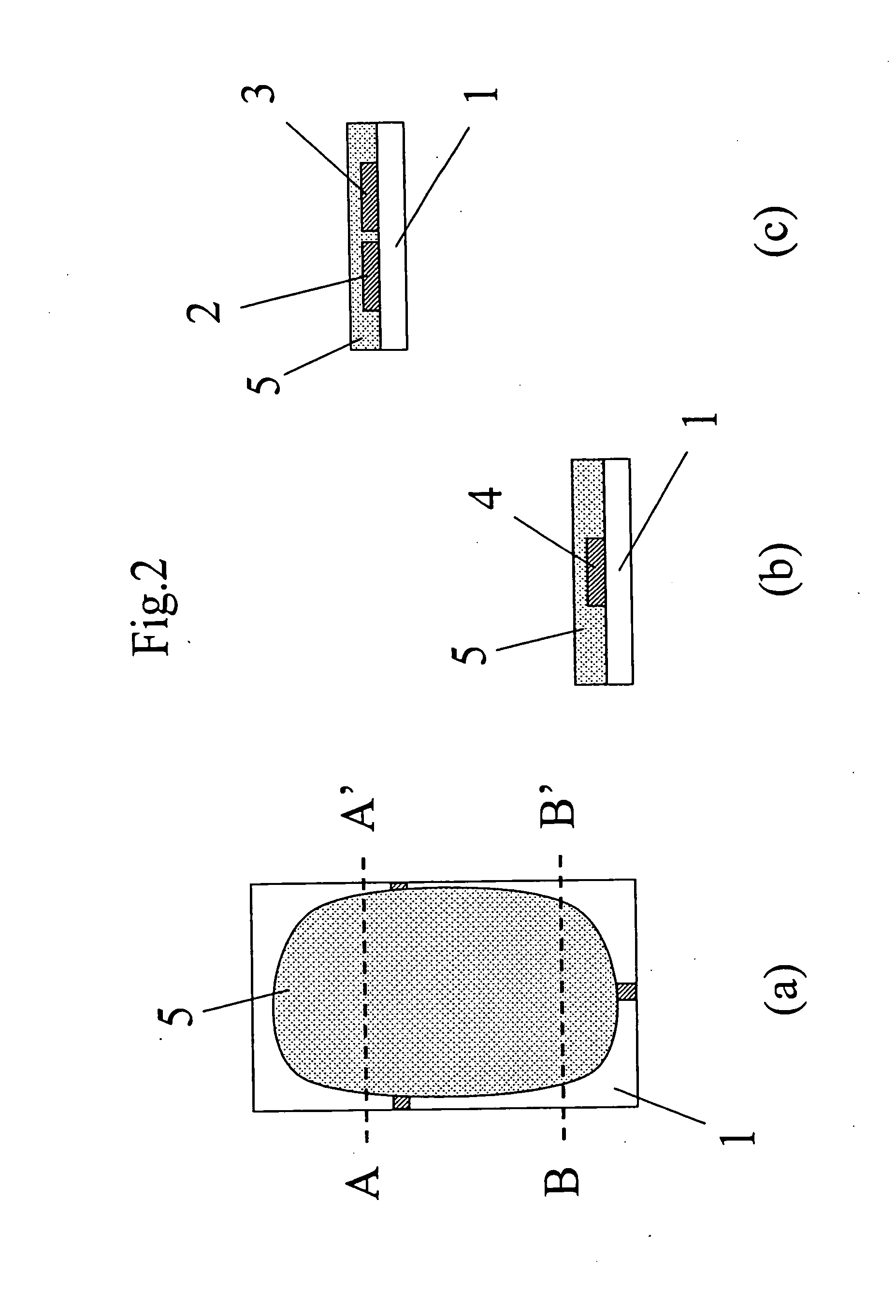Electrolyte pattern and method for manufacturing an electrolyte pattern
- Summary
- Abstract
- Description
- Claims
- Application Information
AI Technical Summary
Benefits of technology
Problems solved by technology
Method used
Image
Examples
example
[0147]The following is a preferred embodiment of the manufacturing method and the resulting transistor according to the present invention. In a first step, source, drain, and gate electrodes are patterned from an evaporated gold layer on a glass substrate. The source and drain electrodes are separated so as to define a transistor channel between them. The channel length L is 20 μm, and the width W is 1 mm. The gate electrode is positioned laterally to the source-drain electrode pair, at a distance of 1 mm.
[0148]A thin layer (40 nm thick) of the semiconducting polymer ADS2008 (supplied by American Dye Source Inc., Canada) is then spin-coated onto the substrate from a 1% toluene solution and annealed in air. Annealing is performed at a temperature of 80 deg. C. for 10 minutes.
[0149]A layer (600 nm thick) of the gelling agent poly(methylmethacrylate) (PMMA) is spin-coated onto the semiconductor layer from a 6% butylacetate solution and annealed in air. Again, annealing is performed at ...
PUM
 Login to View More
Login to View More Abstract
Description
Claims
Application Information
 Login to View More
Login to View More - R&D
- Intellectual Property
- Life Sciences
- Materials
- Tech Scout
- Unparalleled Data Quality
- Higher Quality Content
- 60% Fewer Hallucinations
Browse by: Latest US Patents, China's latest patents, Technical Efficacy Thesaurus, Application Domain, Technology Topic, Popular Technical Reports.
© 2025 PatSnap. All rights reserved.Legal|Privacy policy|Modern Slavery Act Transparency Statement|Sitemap|About US| Contact US: help@patsnap.com



